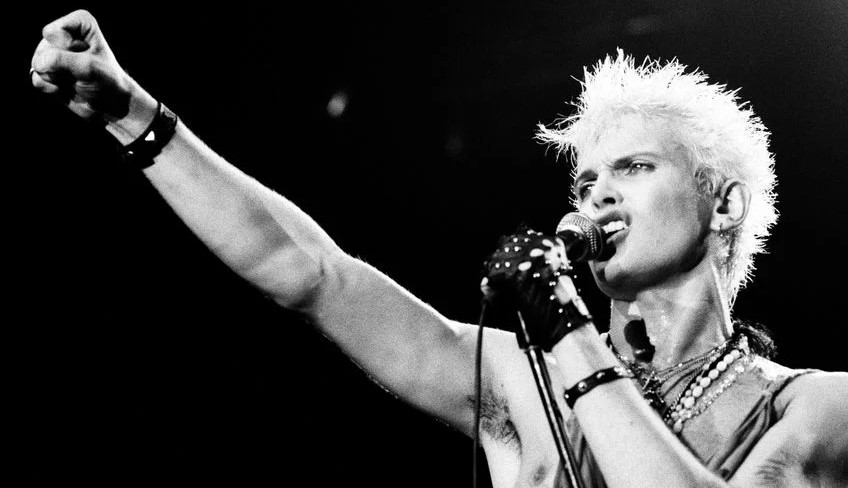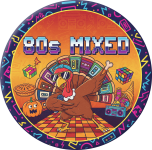From the snarling lip and spiked platinum hair to the fist-pumping anthems that soundtracked a generation, Billy Idol was more than just a rock star; he was a cultural icon who perfectly embodied the rebellious spirit and visual extravagance of the 1980s. His rise to fame was a potent cocktail of punk rock grit, pop sensibility, and the groundbreaking power of MTV. Let’s take a rewind trip to explore how William Broad, the boy from Middlesex, became the leather-clad legend we know and love.
Before the bleach and the sneer, Billy Idol cut his teeth in the late 1970s London punk scene as the charismatic frontman of Generation X. While the band enjoyed moderate success with singles like “Ready Steady Go,” it was clear that Broad possessed a star quality that yearned for a bigger stage. In the early 80s, he made the bold move across the Atlantic to New York, a city buzzing with new wave energy and hungry for the next sensation.
This relocation proved to be a pivotal moment. Shedding some of the punk constraints, Idol, now working with guitarist Steve Stevens, began to craft a sound that was both edgy and undeniably catchy. His self-titled debut album in 1982, featuring the infectious “White Wedding” and the rebellious “Dancing with Myself” (a re-recorded Generation X track), laid the groundwork for his burgeoning stardom.
But it was the advent of MTV that truly propelled Billy Idol into the stratosphere. His music videos were not just promotional tools; they were mini-movies that perfectly captured his persona. The iconic visuals for “White Wedding,” with its gothic romance undertones, and “Rebel Yell,” featuring Idol’s signature sneer and fist pump, were instantly captivating. MTV played these videos relentlessly, turning Billy Idol into a household name and a pin-up for a generation craving attitude and excitement.

1983’s “Rebel Yell” album was a commercial and critical triumph. The title track, with its driving beat and unforgettable chorus, became an anthem of youthful defiance. Other hits like “Eyes Without a Face,” a surprisingly tender ballad showcasing a different side of Idol’s artistry, and the hard-rocking “Flesh for Fantasy” cemented his status as a major force in popular music.
Billy Idol wasn’t just about the music; he cultivated an image that was both dangerous and alluring. The ripped fishnets, the leather jackets, the bleached spiky hair – it was a look that screamed rebellion while simultaneously possessing a rock-and-roll swagger that was irresistible. He understood the power of visual presentation in the MTV era and used it to his full advantage.
The mid-to-late 80s saw Idol continue his reign with albums like “Whiplash Smile” (1986), featuring the hit “To Be a Lover,” and “Charmed Life” (1990), which included “Cradle of Love.” While musical trends shifted, Billy Idol remained a consistent presence on the charts and in the hearts of his fans.
Looking back, Billy Idol’s rise to fame in the 1980s was a perfect storm of talent, timing, and visual innovation. He took the raw energy of punk, polished it with pop hooks, and delivered it with an undeniable charisma that was perfectly suited for the MTV generation. He wasn’t just riding the wave of the decade; he was defining its rebellious and glamorous spirit, one snarl and fist pump at a time. His music continues to resonate today, a testament to the enduring power of a true rock and roll icon.



Leave a Reply